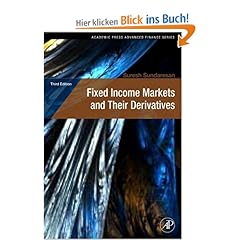 316673.rar
大小:(3.88 MB)
316673.rar
大小:(3.88 MB)
只需: 20 个论坛币
马上下载
本附件包括:
- Fixed Income Markets and Their Derivatives.pdf
Fixed Income Markets and Their Derivatives, Third Edition (Academic Press Advanced Finance)
by: Suresh Sundaresan

Publisher: Academic Press
Number Of Pages: 448
Publication Date: 2009-03-20
ISBN-10 / ASIN: 0123704715
ISBN-13 / EAN: 9780123704719
Product Description:
The 3e of this well-respected textbook continues the tradition of providing clear and concise explanations for fixed income securities, pricing, and markets. The book matches well with fixed income securities courses. The book's organization emphasizes institutions in the first part, analytics in the second, selected segments of fixed income markets in the third, and fixed income derivatives in the fourth. This enables instructors to customize the material to suit their course structure and the mathematical ability of their students.
* New material on Credit Default Swaps, Collateralized Debt Obligations, and an intergrated discussion of the Credit Crisis have been added.
*Online Resources for instructors on password protected website provides worked out examples for each chapter.
* A detailed description of all key financial terms is provided in a glossary at the back of the book.
Summary: The best available introduction to fixed income
Rating: 4
Bachelier's excellent review is spot on, this phrase in particular.
"Sundaresan' FIM&D3 is appropriate for teaching an undergraduate course in fixed income (both for business and finance majors) and for graduate students in generalist MBA programs (but NOT finance MBA)".
His benchmarks are Fabozzi and Martellini et al.; I would like to suggest Tuckman as another standard, a book that, in my opinion, does the best job on bond math, and, unlike Martellini et al. (which I like best despite missing-in-action editing), is suitable for undergrads and MBA students.
Nonetheless, for introductory purposes, I would readily pick Sundaresan over Tuckman, favoring "big picture" narrative and breadth of coverage over math. (Speaking of math, I think that Sundaresan's Excel examples have the best chance of getting a reader to try out a calculation). The choice of Sundaresan over Fabozzi would be a matter of "better less but better", favoring the more concise and better-written textbook.
The book's Achilles heel is discussion of rate derivatives. Addressing short-rate models, Sundaresan opts not to go into option-pricing territory, which makes for an "interesting" chapter on caps and floors. It is harder to see why the chapter on interest-rate swaps does not deliver expected material, including a fundamental pricing argument reported in any other book. This lowers my rating, but leaves intact my view of Sundaresan's volume as the best introductory FI textbook on the market.

 扫码加好友,拉您进群
扫码加好友,拉您进群